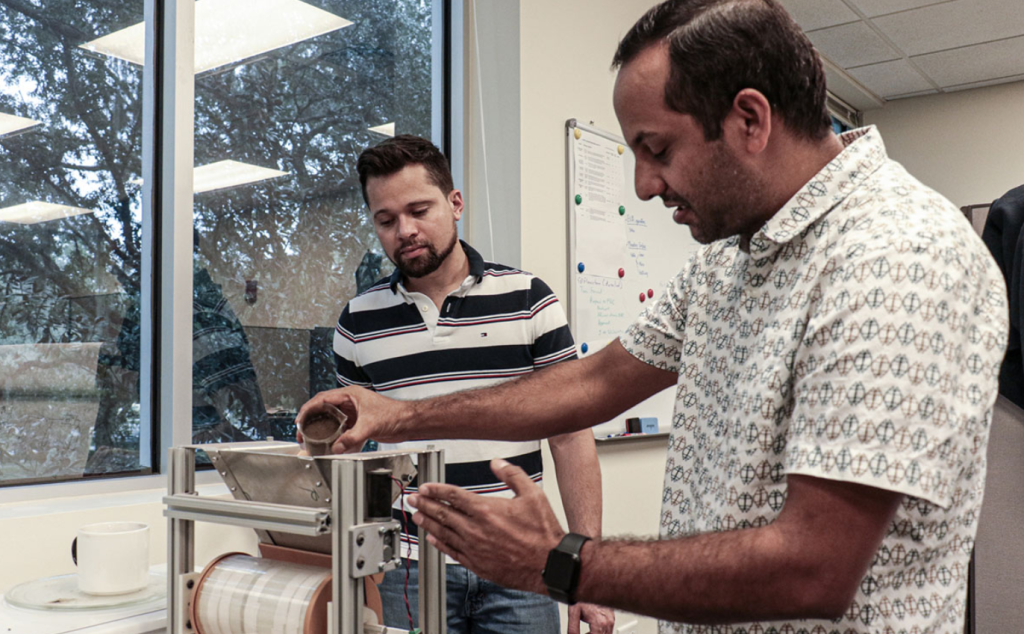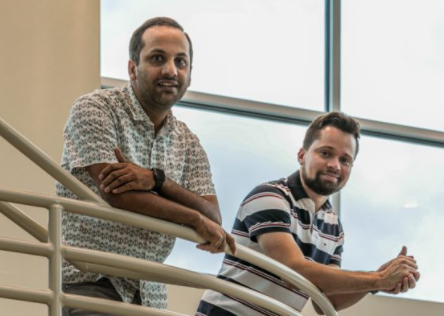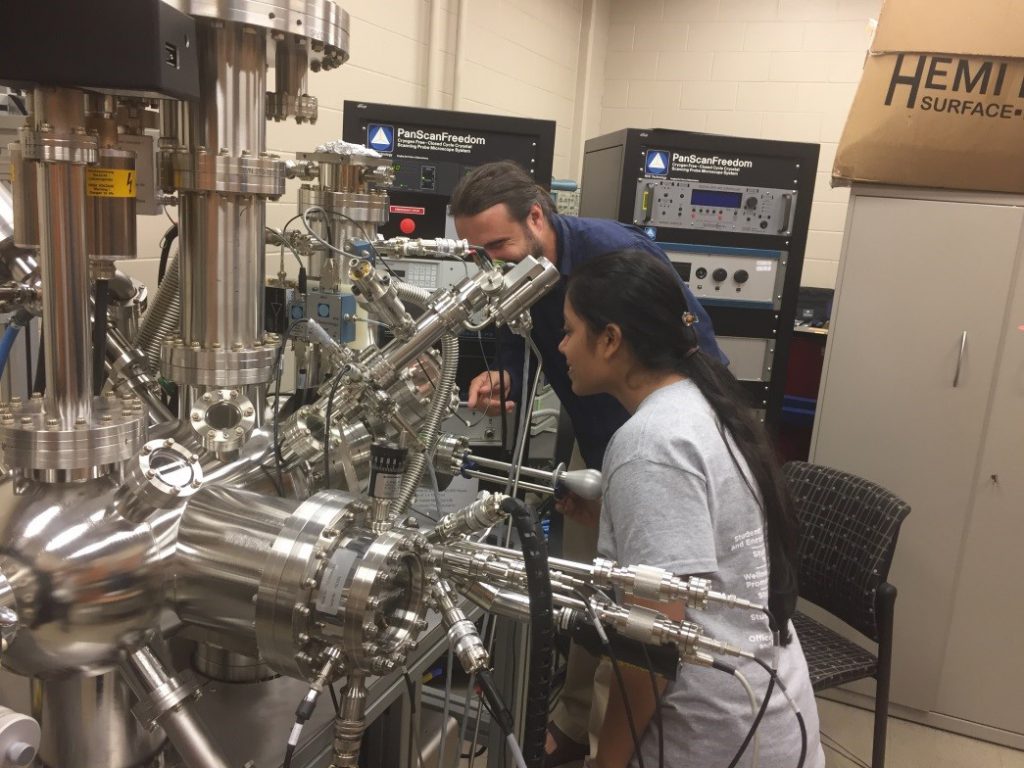UCF researchers are working with private companies to develop some intriguing ways to get astronauts to the moon safely.
BY ZENAIDA GONZALEZ KOTALA | NOVEMBER 24, 2021

Imagine hitting a button and instantly creating a landing pad just moments before descending a rocket onto the moon or an asteroid. That’s the concept behind two research projects underway at the Florida Space Institute at UCF.
FSI postdoctoral researcher Douglas Fontes worked with planetary scientist Phil Metzger and Masten Space Systems, a private company, to create a model that may do just that.
Using Molten Metal
FSI Postdoctoral researcher Douglas Fontes worked with Planetary Scientist Phil Metzger ’00MS ’05PhD and Masten Space Systems, a private company, to create a model that may do just that.
“When a rocket lands it blows a lot of gas to slow down its decent,” says Fontes. “That disturbance can blow back soil or rocks that could damage the rocket or equipment it is carrying. It could also create a crater, which wouldn’t be good.”
Masten developed the concept and UCF has provided the modeling and analysis to determine if it is feasible.
Droplets of molten metal are blown in rocket exhaust, so the idea is to have the droplets self-assemble into a landing pad on the surface of the moon seconds before landing, Fontes says.
Fontes performed computer modeling to show how the droplets behave inside the rocket exhaust for the project. Analysis showed the concept is feasible, and researchers are looking to further mature the landing pad technology.
Fontes came to UCF from Brazil in 2019 and completed a postdoc in the College of Engineering’s Computational Fluid and Aerodynamics Laboratory before moving to FSI to work with Metzger.
“I’ve always been interested in complex multiphase flow, which is prevalent in rocket landing,” says Fontes who has extensive knowledge in fluid dynamics.
In 2022, he is headed to California where he has taken a position as an assistant professor at the Westmont College.

Magnetic Sorting Method
The second project related to landing pads is with Colorado based Cislune Company, which is working on several technologies to help get people to the moon. The project with UCF is a result of NASA’s Small Business Technology Transfer program.
Metzger is working with UCF postdoctoral researcher Dhaka Sapkota to create a new method of building lunar landing pads that use magnetic sorting to sort the different mineral grains from each other so that a better building material can be created.
The project is about halfway complete, and if it’s successful may receive a second round of funding, says Metzger, who formely worked with NASA.
“When we go back to the moon, we do not want to take the same level of risks as we did in the past,” says Sapkota, who has a doctorate in physics and has been working with Metzger since 2020. “We want to protect each other during the process and preserve the scientific integrity of the site we land on. And this isn’t just about one trip. We want to create a viable and sustainable way to get there and back.”
Metzger is a well know space expert. His focus is research and technology development related to lunar, Martian, and asteroid regolith — including soil compaction processes on airless bodies; rocket exhaust interactions with regolith; modeling the mechanics and excavation of soil; and developing technologies that use regolith as a resource.


